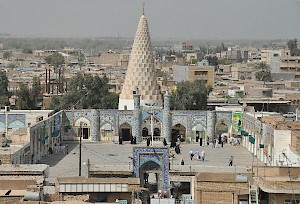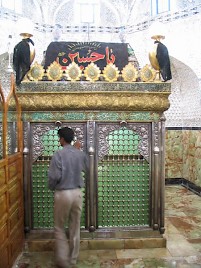Susa, Tomb of Daniel
Q3297266Susa (Elamitic, Babylonian: Šušim; Greek τὰ Σοῦσα): capital of Elam, favorite residence of the Persian king Darius I the Great.

Susa is mentioned in the Bible in the Book of Esther, and it is possible to walk through the remains of the ancient palace and identify locations from this Biblical story. Esther is said to be buried in modern Hamadan. Still, there is a Biblical prophet reportedly buried in Susa: there is a mausoleum of Daniel.

In the Sasanian age, the city had had a large Christian community, who in the seventh century offered resistance against the Arab invaders (638 CE). Nevertheless, the city was captured and sacked.
When the Arabs had gained control of the town, they discovered in what may have been the Church of Saint Daniel a silver sarcophagus with a mummy that was buried with a seal of a man standing between two lions. This was immediately taken to be a reference to the Biblical prophet Daniel. Although Caliph Umar at first ordered it to be thrown into the river - Daniel is not mentioned in the Quran - he later ordered a more decent reburial.note
The conquerors soon took over the veneration of Daniel in Susa. The sanctuary is still a landmark in Susa, although the ancient mummy and the seal are not visible.
There is another pre-Islamic tomb of Daniel in Samarkand.